The Princeton Review
555 W. 18th Street
New York, NY 10011
E-mail:
Copyright 2016 by TPR Education IP Holdings, LLC. All rights reserved.
Published in the United States by Penguin Random House LLC, New York, and in Canada by Random House of Canada, a division of Penguin Random House Ltd., Toronto.
Terms of Service: The Princeton Review Online Companion Tools (Student Tools) for retail books are available for only the two most recent editions of that book. Student Tools may be activated only twice per eligible book purchased for two consecutive 12-month periods, for a total of 24 months of access. Activation of Student Tools more than twice per book is in direct violation of these Terms of Service and may result in discontinuation of access to Student Tools Services.
ISBN9781101920534
Ebook ISBN9781101920688
SAT is a registered trademark of the College Board, which is not affiliated with The Princeton Review.
The Princeton Review is not affiliated with Princeton University.
Editor: Aaron Riccio
Production Editor: Liz Rutzel
Production Artist: Gabriel Berlin
Editorial
Rob Franek, Senior VP, Publisher
Casey Cornelius, VP Content Development
Mary Beth Garrick, Director of Production
Selena Coppock, Managing Editor
Meave Shelton, Senior Editor
Colleen Day, Editor
Sarah Litt, Editor
Aaron Riccio, Editor
Orion McBean, Editorial Assistant
Penguin Random House Publishing Team
Tom Russell, VP, Publisher
Alison Stoltzfus, Publishing Director
Jake Eldred, Associate Managing Editor
Ellen Reed, Production Manager
Suzanne Lee, Designer
v4.1
a
Acknowledgments
This book could not have been built without the hard work and dedication of Christina Bonvicino, Chris Chimera, Amy Minster, and Jonathan Chiu.
Additionally, The Princeton Review would like to thank Gabriel Berlin for diligently deciphering our notes and translating them into the clean copy seen within this book, and Liz Rutzel for scouring the interiors for errors.
Special thanks to Adam Robinson, who conceived of and perfected the Joe Bloggs approach to standardized tests and many of the other successful techniques used by the Princeton Review.
Contents
Register Your Book Online!
Go to PrincetonReview.com/cracking
Youll see a welcome page where you can register your book using the following ISBN: 9781101920688
After placing this free order, youll either be asked to log in or to answer a few simple questions in order to set up a new Princeton Review account.
Finally, click on the Student Tools tab located at the top of the screen. It may take an hour or two for your registration to go through, but after that, youre good to go.
If you are experiencing book problems (potential content errors), please contact with the following information:
your full name
e-mail address used to register the book
full book title and ISBN
your computer OS (Mac or PC) and Internet browser (Firefox, Safari, Chrome, etc.)
description of technical issue
Once youve registered, you can
Find any late-breaking information about the SAT.
Get valuable advice about the college-application process, including tips for writing a great essay and where to apply for financial aid.
Sort colleges by whatever youre looking for (such as Best Theater, Best Dorm, or Top Notch Professors), learn more about your top choices, and see how they rank according to The Best 381 Colleges.
Check to see if there have been any corrections or updates to this edition.
Look For These Icons Throughout The Book
 Proven Techniques
Proven Techniques
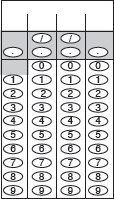 Student-Produced Response
Student-Produced Response
 Applied Strategies
Applied Strategies
 Calculator Permitted
Calculator Permitted
Introduction
IN THE BEGINNING
Even though the SAT is designed for juniors and seniors, most of the math on the test bears little resemblance to the type of math found in the high school classroom. Many students find it hard to believenot to mention a little humiliatingthat a test that seems so difficult actually tests little more than basic algebra, arithmetic, and geometry. Even students who are very good at math in school often have trouble on the SAT. Why?
The fact is that while the SAT uses basic mathematical concepts, its unlike any math test you will ever see in school. The SAT uses basic math problems in very particular ways. This is why preparing for the SAT requires a new set of skills. The SAT does not test how smart you are, how well you will do in school, or what kind of person you are. It only tests how well you do on the SAT. And doing well on the SAT is a skill that can be learned.
How can you improve your score on the SAT? First, you need to learn the structure of the test. This will help you develop an overall test-taking strategy. Then you need to learn some powerful test-taking skills, which will help you think your way through SAT-type problems.
Some of our advice may sound a little strange. In fact, if you try some of our techniques in math class, your teacher will probably be unhappy. But remember, this isnt math class. This is the SAT, and its your job to get as good at SAT math as you can.
Structure of the Math Sections
Of the four scored multiple-choice sections on the SAT, two of them will be math. The questions will be presented in two different formats: regular multiple choice and grid-ins. We will discuss how to deal with each of these question formats.
How to Use this Book
This book is designed for students who want concentrated math preparation. It can be used alone or as a supplement to our Cracking the SAT. While we will briefly review the essential Princeton Review test-taking strategies and problem-solving skills, if you want an in-depth guide to these techniques, youll want to also read Cracking the SAT.
Where Does the SAT Come From?
The SAT is published by the Educational Testing Service (ETS) under the sponsorship of the College Entrance Examination Board (the College Board). ETS and the College Board are both private companies.
WHAT IS THE PRINCETON REVIEW?




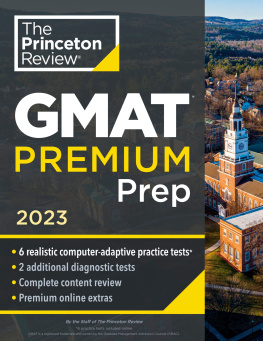

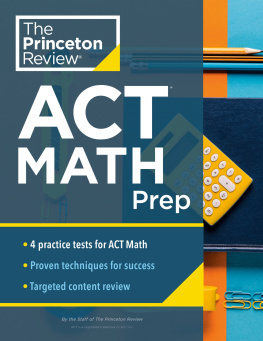
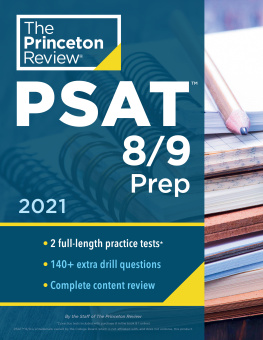
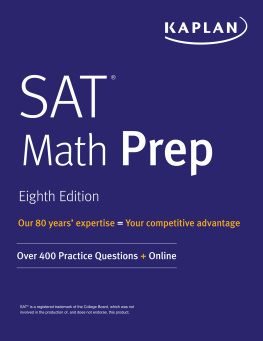


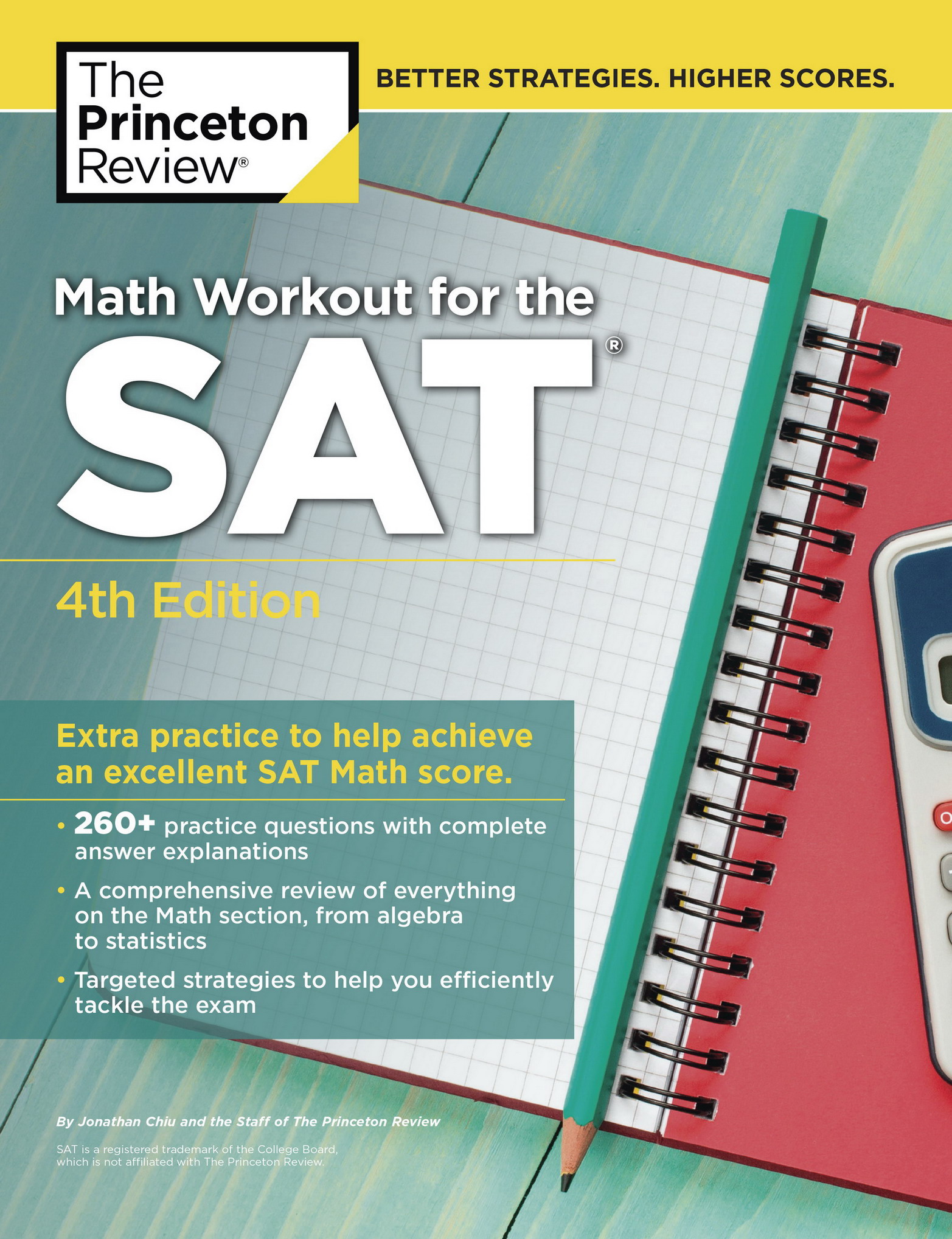
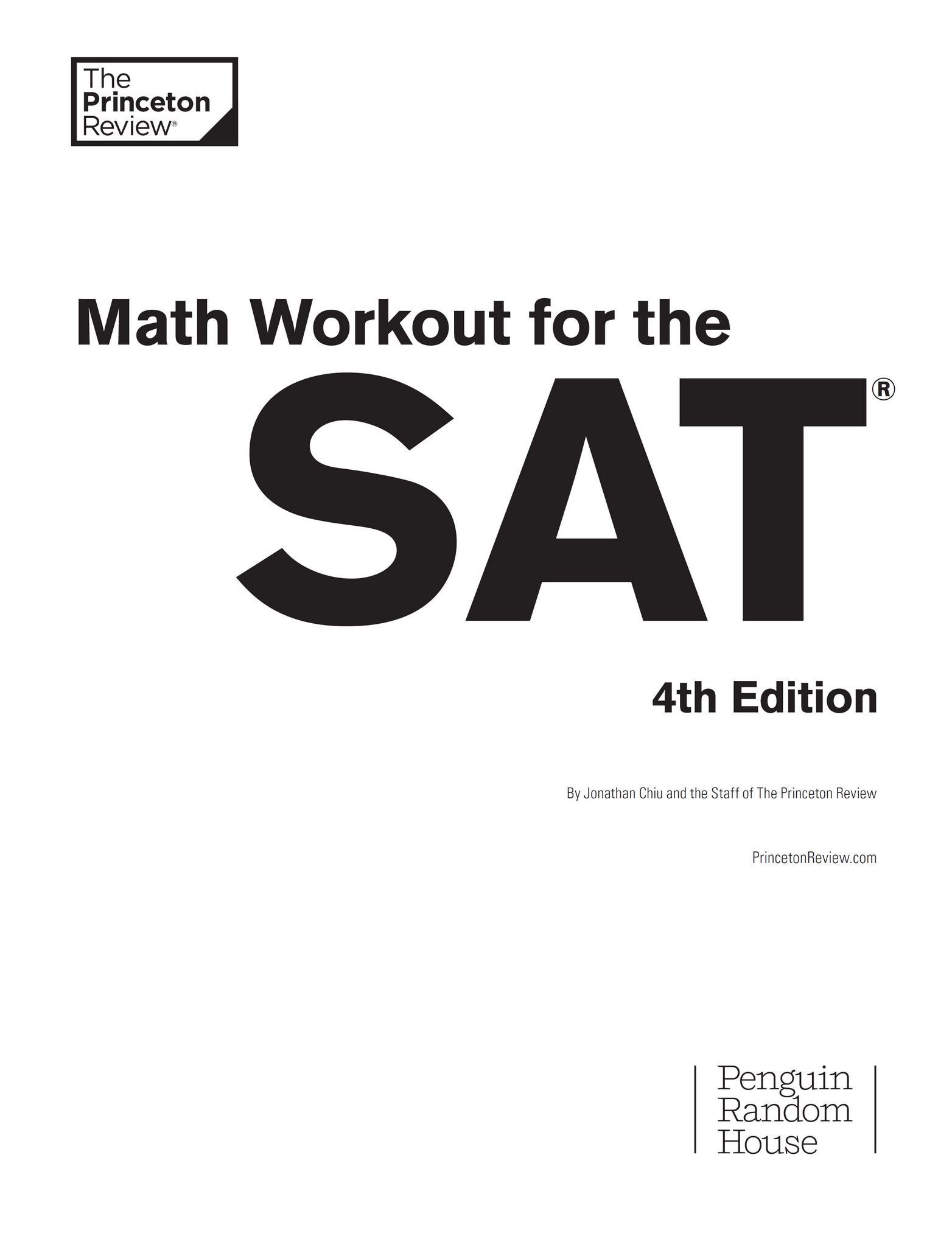

 Proven Techniques
Proven Techniques Student-Produced Response
Student-Produced Response Applied Strategies
Applied Strategies Calculator Permitted
Calculator Permitted